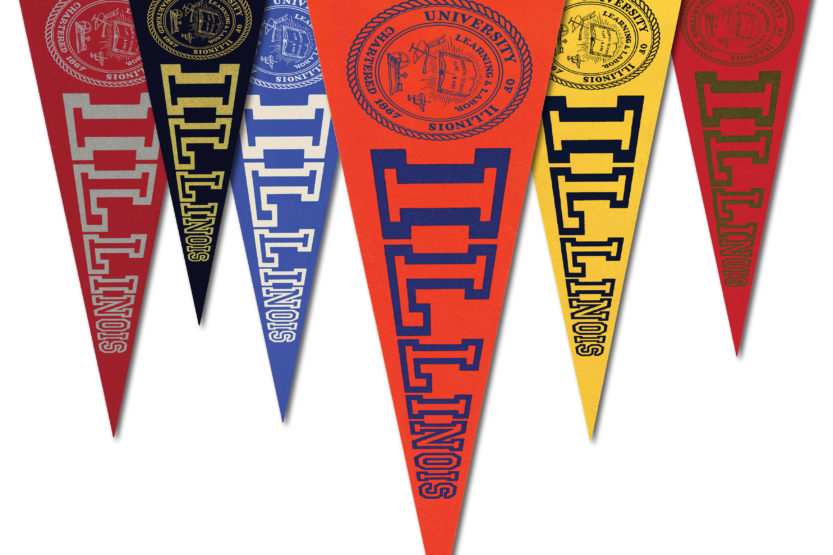Full spectrum
 Early school colors were as consistent as the weather.
Early school colors were as consistent as the weather. Chalk it up to fickleness, finickiness or just plain indecision. It wasn’t until 1894, more than a quarter century after its founding, that the University of Illinois selected orange and blue as its official colors. Given the associations various colors impart, University officials simply couldn’t reach a consensus, thereby launching 27 years of trial and error. With the benefit of color photography, today’s students likely would puzzle over the lack of consistency from year to year.
Candidate colors spanned the spectrum. In 1879, the year the University launched its baseball team, colors were silver and cardinal, only to be replaced by gold and black in the mid-1880s. Blue appeared in 1888, accompanied by white in 1891. A year later, yellow and black were the colors of the day. The following year, the University’s Athletic Association adopted crimson, and a month later, olive green. Dartmouth green also joined the mix that year, albeit briefly. All told, campus colors were about as consistent as the weather.
The 1894 dedication of Engineering Hall—an event festooned with decorations—proved pivotal in settling the matter. The Athletic Association recommended orange (symbolizing “freedom”) and blue (for “steadfastness and stability”) to Illinois President Andrew Sloan Draper. He, in turn, left the decision to faculty and students. They’ve been hailing to the orange and blue ever since.
Orange symbolizes Freedom.
Blue symbolizes Steadfastness.

